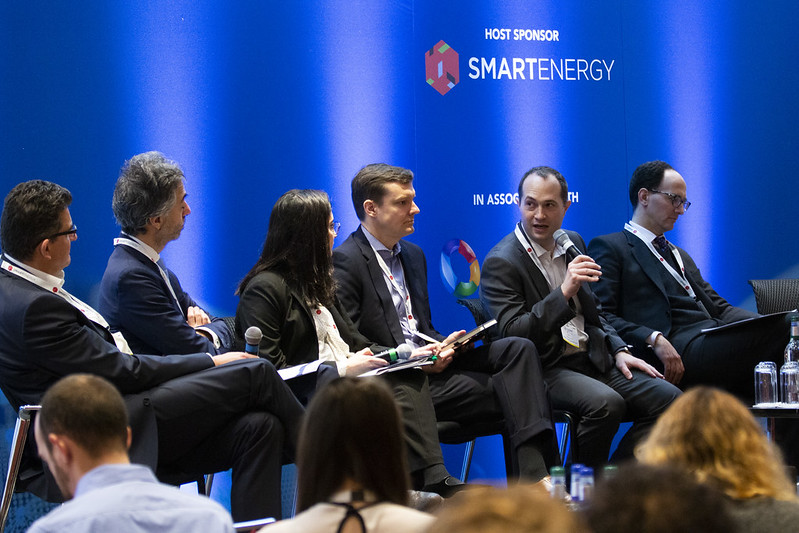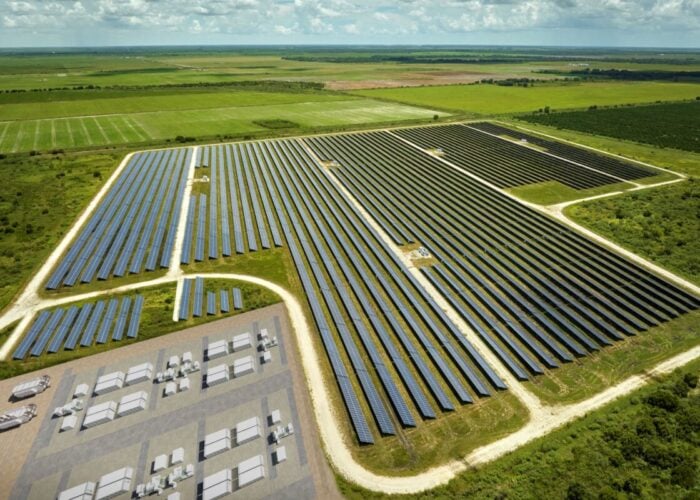
Scale will be vital as Europe’s utility-scale solar sector accelerates, but with that acceleration comes creeping cannibalisation, consolidation and the capability of managing pan-global portfolios of distributed assets.
Those were the key findings from last week’s Solar Finance & Investment Europe conference, organised by PV Tech publisher Solar Media, which brought together hundreds of financiers, developers, asset managers and component manufacturers from across Europe just as the continent’s solar industry looks ripe for a surge in activity.
Unlock unlimited access for 12 whole months of distinctive global analysis
Photovoltaics International is now included.
- Regular insight and analysis of the industry’s biggest developments
- In-depth interviews with the industry’s leading figures
- Unlimited digital access to the PV Tech Power journal catalogue
- Unlimited digital access to the Photovoltaics International journal catalogue
- Access to more than 1,000 technical papers
- Discounts on Solar Media’s portfolio of events, in-person and virtual
But as PV Tech heard throughout the two-day event, while there is potential for extraordinary growth in European solar in the coming years, that growth will place new strains and demands on operators in the space.
Scale is king
European solar deployment has arguably become typified by two key trends; the emergence of subsidy-free business models and drastically lower tender prices. In order to do business in such a price-sensitive environment, it’s the larger players with scale on their side that will emerge victorious.
Aldo Beolchini, managing partner and chief investment officer at NextEnergy Capital, said that one of the main reasons as to how his firm has been able to deploy tens of megawatts of subsidy-free solar in the past six months – with tens more to be deployed by the end of this year – is that the firm has a sizeable subsidy-backed, operational portfolio in the UK already. NEC’s subsidy-free assets are built on a merchant basis, and the company is capable of mitigating much of that risk by integrating those assets into its subsidy-backed portfolio.
This kind of business model is emerging fast, with many asset holders signing up to the belief that an operational portfolio must now be greater than the sum of its parts, lending strengths other than just the generation of clean power. It will be down to asset owners and managers to leverage those strengths to drive efficiencies elsewhere.
Limited potential in cutting-edge technologies
Not a trade conference goes past without mention of cutting-edge technologies such as blockchain, AI and machine learning and, true to trend, SFIEurope was no different.
But while those technologies are now being trialled and adopted within the solar PV ecosystem, asset owners remain cautious of their application as it stands. Lee Moscovitch, partner at investor Greencoat Capital, said that AI-led solutions which feed into predictive maintenance were great, but if asset managers aren’t quick enough to resolve the problems the AI identifies then the benefits are lost.
This in turn is further complicated by the fragmented nature of Europe’s solar sector, where even a single portfolio might hold projects comprised of parts from numerous module, inverter, transformer and other manufacturers.
Tackling this will therefore require asset managers and O&M companies to become more sophisticated with the technology, holding strategically located spare parts that can be called upon as and when required, learning frequently from failure rates and trends.
Policy still holds sway
It would be easy to conclude that in an environment that’s increasingly subsidy-free, solar may have evolved beyond needing regulatory support. But as SFIEurope heard frequently, that is simply not the case. In an impassioned plea during Tuesday’s keynote Lord Adair Turner, chair of the Energy Transition Commission, said that policy moves were still “hugely important” in the renewables arena, pointing to the crucial role they’ve played in driving costs down until now.
And their role continues today. Solarcentury founder Jeremy Leggett spoke of the “terrible importance” policy still carries in enabling significant quantities of renewable power to come onto the grid. The words echoed calls from a panel of investors earlier on day one for capacity auctions to take hold throughout Europe, such is the level of confidence they provide investors.
There is also the looming spectre of network charging reforms. UK energy regulator Ofgem’s Targeted Charging Review has removed embedded benefits for renewables generators and moved the goalposts for how distributed energy sources pay for network costs, increasing the fees payable and having an impact on ROIs. A handful of asset operators warned that similar reforms are only likely to spread throughout Europe as other markets update their network charging protocols for a more distributed energy economy.
As a result, Lord Turner remarked that it was important for renewables to win fact-based arguments even in a more emotion-led era of politics.
Cannibalisation and consolidation loom large
Cannibalisation was mentioned throughout the conference and while this was predominantly in relation to the prospect of significant new renewables capacity dragging power prices, a certain amount of price cannibalisation will be felt elsewhere, exacerbated by consolidation in the sector.
As the market matures, larger plays stand to dominate and the expected trend is for fewer players to take larger pieces of the pie, especially in competitive fields such as asset management and O&M. A poll of the audience on day two found a near equal split – 40% expected the most consolidation to take place in built asset owners, while 40% expected there to be strong M&A activity in service providers such as O&M firms. Bigger players will then be able to price out the smaller operators, given their capability to leverage their own scale to accept thinner margins.
Fear not, smaller and more localised providers of specialised services, however, for there will be a role for all to play in the clean energy economy. Quintas’ Declan O’Halloran remained steadfast in his opinion that all O&M will essentially be local in the future, with larger players incapable of providing dedicated services to built assets spread far and wide.
Globalisation will transform utility-scale solar
As the number of markets opening up to solar increases, and as consolidation ramps up, and as scale becomes all the more important, the future of utility-scale solar will be shaped by those companies capable of assembling teams that span different continents, not just markets.
One of the trends repeatedly picked up on over the course of the event was that of multinational utilities and developers – the likes of Iberdrola, Lightsource BP, Shell and handful of others – taking huge swathes of multiple markets. This is in turn creating a solar ecosystem that is truly global, shaped by companies operating in a large number of markets simultaneously.
Pan-global asset management and O&M companies will spring up capable of serving them, Sonnedix CFO Stephen Williams said, with globalisation emerging as a key trend to watch.
But this in turn poses a significant challenge, shaped by solar’s nature as a distributed energy resource. “We’re not building Hinkley Point C here,” said one asset manager, indicating that a pan-global solar portfolio will comprise hundreds of unique assets spread relatively thinly, rather than a single, multi-gigawatt generator.
It’ll be a “fairly unique” company that’s capable of piecing everything together, they added, lending only further importance on the need to match scale with sophistication.
Other stories from the SFI Europe conference include:
–Spanish solar ‘no bubble’ despite grid chaos, big player squeeze
–Cannibalisation to threaten Europe’s utility-scale solar drive
–Unavoidable risks cannot stop merchant solar momentum
–Industry fears Portugal’s ultra-low PV tariff approach will spread
–Huge potential but unique challenges for Australia’s O&M market







